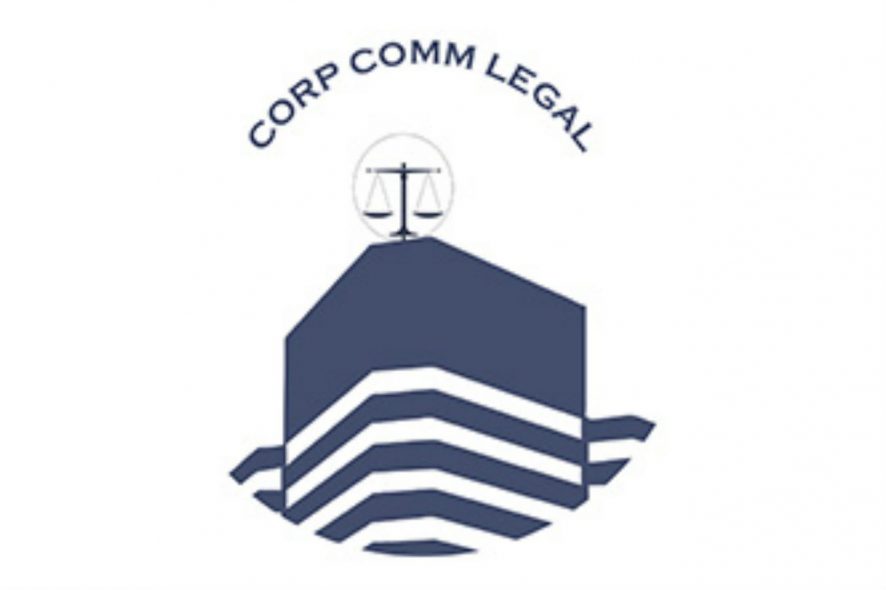While presenting her maiden budget last year, India’s Finance Minister Nirmala Sitharaman indicated that the Government would be considering raising the Minimum Public Shareholding (“MPS”) norms from the current minimum limit of 25% in all listed entities to a new baseline of 35%[1]. This would mean that a minimum of 35% of shares of any listed entity would now have to be held by the public shareholders.

According to various market sources, this increase in minimum public shareholding norms is likely to affect 1174 of the 4700 companies[2] listed in the Indian stock market and the total quantum of sale that would be required to be made by these companies would be around Rs. 3,87,000 Crores[3]. TCS (~Rs. 59,600 Crores), Wipro (~Rs. 15,000 Crores) and D-Mart (~Rs. 14,000 Crores) would have to make some of the biggest sales[4] and the stocks of such companies would be expected to underperform as there might not always be sufficient demand to ensure price stability[5].
The dilution of promoter holding in some of the biggest listed entities in the Indian market would lead to better price discovery, as the shares would now be held by multiple entities instead of a few promoters and connected entities. Further, the increase in liquidity would also help in adding depth to the market. However, certain companies, especially multinational corporations may choose to delist as now the promoters and promoter group entities would not be able to unilaterally pass special resolutions (which required 2/3rd majority), which would take away effective control from them on certain issues. This increase in equity in the market would also have an effect on SENSEX and NIFTY, which are calculated by the free float method[6]. The sale of equity would result in earnings of Rs 3,87,000 crores by the promoters which in turn would augur a windfall on the government’s coffers in the form of capital gains tax. However, whether the Indian markets are in a state to absorb such additional equity given the current market conditions remains in question. Fortunately, no change has been made to the thresholds yet and as per news reports, even SEBI is looking to differ the introduction of the new norms[7].
In light of the COVID-19 pandemic that has brought the entire economy to screeching halt, SEBI has granted some necessary exemptions and one of them is delaying of filing the shareholding by the promoters from April 15th to June 1st, 2020[8]. However, SEBI has not relaxed the minimum public shareholding norms and rightly so. Given how low the current market is, relaxing these norms would only allow the promoters to buy company stocks at a cheaper rate and then resell this stock the public once they are required to comply with the shareholding norms again. Not only this, but it is in this time of chaos that the corporate governance standards in any company need to be applied stringently and allowing promoters to acquire further shareholding might become a hindrance to this. Further, such exemptions might put at least moral obligations on companies to give their public shareholders an exit, which would add to the duress they currently face. Hence, the status quo maintained by SEBI on the shareholding issue on either side has helped maintain the stability in times of the pandemic.

As public shareholding is the opposite of promoter shareholding, it is essential to understand who a promoter is. According to the SEBI Regulations, a promoter is essentially someone who is in control of the company[9]. However, along with the concept of “promoter”, SEBI has also introduced the concept of “promoter group”[10] which artificially imports certain categories of people such as the immediate relatives and virtually bounds them in the concept of controlling group, which is otherwise a rather fluid concept in most foreign jurisdictions.
If we look at the nature of this relationship through the lens of various SEBI Regulations that seek to regulate the conduct of the promoters of a company, this inclusion into the promoter shareholder category imposes immense burden and liability on the promoter group entity without giving them many rights. Along with this, this classification of entities in the “promoter group” category is based on direct or actual control that is being exercised by such entities on the actions of the company but on the likelihood of the person applying control over the company, and hence, this label of promoter group in not a desirable one, especially for those that are not actually in control of the company.
The problems, however, do not stop here. Once someone is classified as a promoter, getting reclassified is a long drawn and painful process where not only the person who wants to get reclassified but also the persons related to him have to reduce their shareholding to less than 10%[11] and have to get the approval of minority shareholders[12]. Thus, it is essential that SEBI, before coming out with the requirement to actually increase the public float rule to 35% should reconsider the concept of “promoter” and more importantly “promoter group” in order to give a more equitable treatment to this category.
A suitable alternative to this concept of promoter and promoter group is the concept of “Controlling Shareholder”. According to the Financial Conduct Authority (“FCA”), which is the regulatory authority for the United Kingdom, a controlling shareholder is a person who, on his own or with someone he is acting in concert with, is able to cast more than 30% of the voting rights or is able to substantially control all the matters in the general meeting of a company[13]. Further, according to the Singapore Exchange, a “controlling shareholder” is someone who holds directly or indirectly holds more than 15% shares of a company or is in fact in control of a company[14]. In China, there is a concept of “Actual Controlling Person” according to which, any natural person, government authority, enterprise or international organisation that may exercise ultimate control, either directly or indirectly through equity interests, trusts, contracts or any other means should be considered as a the “actual controlling person”. Further, it provides that control might be asserted in the following three ways:
- by holding more than 50% equity interests, shares, voting rights, property, either held individually or along with related parties; or
- by holding less than 50% equity interests, shares, voting rights, property, but holding adequate voting power to materially influence the decision making of a company; or
- by holding material influence over the company’s finances, technology or human resources etc.[15]
China also has a concept of “Actual Controlling Party” which is someone who is not a shareholder of a company but exercises control over a company through an agreement, an investment relationship or through other relationships[16].
Thus, observing these three definitions of controlling shareholder, it can be seen that the controlling shareholder regime is similar to the promoter regime. However, the key point of differentia between the two regimes is who does it encompass within the scope of its definition, and thus, the principle of actual versus implied control. While in the promoter, and more importantly promoter group regime, the principle was not that of actual application of control over the company by the related parties but rather the likelihood of them applying this control through the promoter they are related to.
Now, what this does in essence is that it obligates these related parties to periodically and repeatedly disclose their shareholding and transactions for the off chance that they might be colluding with the promoter they are related to, in order to assert control over the functioning of the company. However, in the controlling shareholder regime, the focus is on the shareholder that holds the requisite shares or voting rights in order to actually assert control over the functioning of the company. Further, if we observe the regulatory regime in China, even there, the principle is that of liability to the person who holds control. All of these regimes are in congruence with the principle of applying liability to the person who is actually in a position to or has the power to assert control over a company.
Thus, in terms of parity between the two kinds of shareholders, the entities belonging to the “Promoter Group” class are at a disadvantage just because of their personal or business relations with the promoter or the company, without any actual proof of them asserting any control over the company and hence, the controlling shareholder regime gives a better footing all of the stakeholders of the company.
Along with this reconsideration of the concept of promoters and promoter groups, SEBI also needs to revamp its reclassification norms in order to make it easier for people to classified or declassified as promoters based on the amount of control that could be exercised by them. If the principle of being a promoter is based on shareholding and control, then it is only logical that when a person ceases to hold such shareholding or control that such person is declassified from the promoter status. The requirement for an approval by the minority shareholders only adds to the procedural red tape, especially when the person had ceased to hold the shareholding or the power to actually control the actions of a company.
To sum up, while it may be a commendable initiative of the Government of India to raise the minimum public shareholding norms, there are certain policy considerations that need to be taken into account before such a change is implemented. Given the huge costs associated with this move, and the resultant instability in the market of this move, it is essential that government takes into consideration issues such as the status of the promoter as well as the regulatory red tape associated with reclassification of the status of promoters in order to bring parity between the two classes of shareholders that form the market.
*****************
* Managing Partner, Corp Comm Legal
**5th Yr, B.A. LL.B.(Hons.) MNLU, Mumbai and student researcher.
[1] (2019, July 05), Budget 2019-20: Minimum public holding raised for listed firms. The Hindu, retrieved from https://www.thehindu.com/business/budget/budget-2019-20-minimum-public-holding-raised-for-listed-firms/article28298797.ece
[2] Bhuva, R. (2019, July 05), Market Gives a Thumbs Down to Budget. Fortune India, retrieved from https://www.fortuneindia.com/investing/markets-give-a-thumbs-down-to-budget-2019-20/103387
[3] Sharma, A. (2019, July 05), Minimum Public Shareholding at 35%; Here’s How it Will Impact Stock Market Liquidity. Business Today, retrieved from https://www.businesstoday.in/union-budget-2019/minimum-public-shareholding-at-35pc-here-how-it-will-impact-stock-market-liquidity/story/361960.html
[4] (2019, July 05), Stocks that will be hit by Budget move to raise public float to 35%. Economic Times, retrieved from https://economictimes.indiatimes.com/markets/stocks/news/stocks-that-will-be-hit-by-budget-move-to-raise-public-float-to-35/articleshow/70089518.cms.
[5] Mascerenhas, R. (2019, July 09). High promoter holding companies likely to underperform. Economic Times, retrieved from https://economictimes.indiatimes.com/markets/stocks/news/high-promoter-holding-companies-likely-to-underperform/articleshow/70136316.cms
[6] (2017, Dec. 01), What is Sensex and Nifty? How are they calculated? IIFL, retrieved from https://www.indiainfoline.com/article/news-top-story/what-is-sensex-and-nifty-how-are-they-calculated-indiainfoline-117120100511_1.html
[7] (2019, Sept. 12), SEBI may defer raising of minimum public shareholding to 35%, Business Standard, retrieved from https://www.business-standard.com/article/markets/sebi-may-defer-proposal-of-raising-minimum-public-shareholding-to-35-119091201678_1.html
[8] (2020, Mar. 27), Relaxation from compliance with certain provisions of the SAST Regulations, 2011 due to the COVID-19 pandemic, SEBI, retrieved from https://www.sebi.gov.in/legal/circulars/mar-2020/relaxation-from-compliance-with-certain-provisions-of-the-sast-regulations-2011-due-to-the-covid-19-pandemic_46442.html
[9] Reg. 2(1)(oo) of SEBI (Issuance of Capital and Disclosure Requirements) Regulations, 2018
[10].Reg. 2(1)(pp) of SEBI (Issuance of Capital and Disclosure Requirements) Regulations, 2018
[11] Reg. 31-A(3)(b)(i) of the SEBI (Listing Obligations and Disclosure Requirements) Regulations, 2015
[12].Reg. 31-A(3)(a)(ii) of the SEBI (Listing Obligations and Disclosure Requirements) Regulations, 2015
[13] (2014, March 28) “Controlling Shareholder”, Financial Conduct Authority Handbook, retrieved from https://www.handbook.fca.org.uk/handbook/glossary/G3382.html
[14] Definition and Interpretation, Singapore Exchange Rulebook, Singapore Exchange, http://rulebook.sgx.com/en/display/display_plain.html?rbid=3271&element_id=4831&record_id=6460&print=1
[15] Appendix 1 to the 2016 Measures, the Filing Form for Establishment of Foreign Invested Enterprises issued by the Ministry of Commerce, People’s Republic of China.
[16] Article 216 of the PRC Company Law, issued and latest amended by the Standing Committee of the National People’s Congress on December 28, 2013 and came into effect on March 1, 2014.







